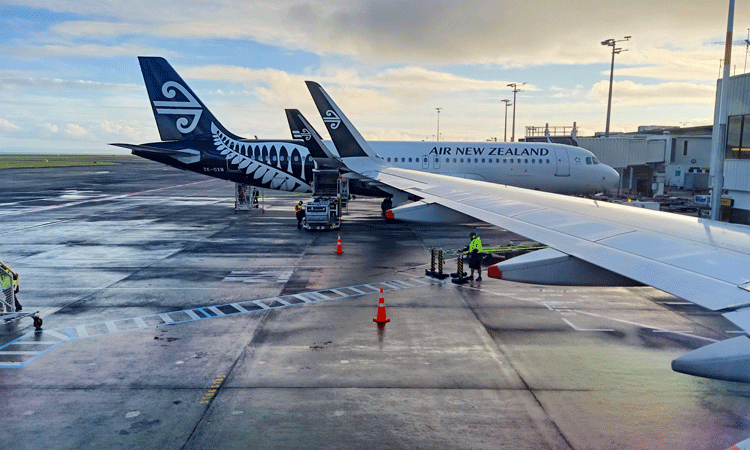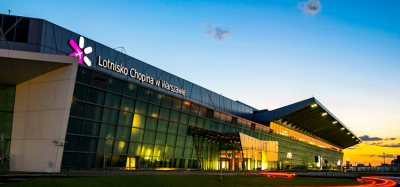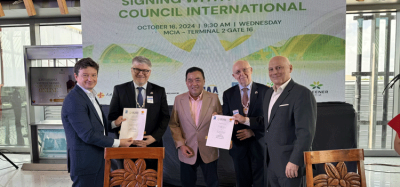Christchurch Airport’s sustainability journey
- Like
- Digg
- Del
- Tumblr
- VKontakte
- Buffer
- Love This
- Odnoklassniki
- Meneame
- Blogger
- Amazon
- Yahoo Mail
- Gmail
- AOL
- Newsvine
- HackerNews
- Evernote
- MySpace
- Mail.ru
- Viadeo
- Line
- Comments
- Yummly
- SMS
- Viber
- Telegram
- Subscribe
- Skype
- Facebook Messenger
- Kakao
- LiveJournal
- Yammer
- Edgar
- Fintel
- Mix
- Instapaper
- Copy Link
Posted: 11 October 2021 | Malcolm Johns | No comments yet
Malcolm Johns, Chief Executive of Christchurch Airport, explains how the airport is already ahead of its target to reach net zero by 2050, and how their work has expanded to assisting other airports, with the aim of decarbonising the entire industry.


The team at Christchurch Airport is proving that world class is a mindset more than a size or location on the planet.
At this international airport at the bottom of the world, our team has set itself the ambitious target of demonstrating the international highest standard of carbon reduction for airports.
Working to science-based targets and with the highest level of scrutiny by industry experts and independent carbon auditors, in November 2020 we became the first airport in the world to be awarded the highest standard of Airport Carbon Accreditation, ‘Transformation’ or ACA Level 4.
Our commitment to balance people, planet and prosperity is key to our mission, so our ACA L4 achievement belongs to the whole company. To reach it, we had to prove strong governance driven from the Board, targets based in science, reduction projects to reduce measurable emissions across the company, and a stakeholder partnership plan to influence reductions in our supply chain.
We did all those things. Christchurch Airport first measured its carbon footprint in 2007 and has since implemented projects to reduce our carbon footprint. In 2017, we gained Airport Carbon Accreditation Level 2. In 2020, we set science-based targets, implementing an Emissions Reduction Plan with tangible results to see us through to zero emissions by 2050.
This included a Stakeholder Partnership Plan including projects to influence emissions reductions outside our direct control – starting with installing gate ground power at all stands. Christchurch Airport is also New Zealand’s only airport to have already installed dedicated electric aircraft charging infrastructure. Working with our airline partners means we hasten their decarbonisation together.
Decarbonising aviation is critical to the future prosperity of the New Zealand economy, intertwined in the supply chains of almost every business and key to maintaining social connectedness. Compared to our trading partners and comparable developed nations, New Zealand has a unique dependency on aviation, with no ability to develop international low emission land transport routes. To maintain any trade advantage, New Zealand must prioritise the decoupling of aviation from fossil fuel.
Christchurch Airport was not only the first airport in Aotearoa/New Zealand to reach Airport Carbon Accreditation Level 4, but the first in the world – achieved without relying on offsets, but through demonstrating measurable emissions reduction initiatives.
Since being awarded ACA Level 4 in November 2020, we have been assisting the transformation of the industry, through running decarbonisation workshops with airports across the world – including Ports of New York and New Jersey, Europe, Asia, Pacific and Australia – as well as assisting smaller regional New Zealand airports.
Our ACA Level 4 Emissions Reduction Plan outlines the projects we have undertaken, and plan to undertake in the future, to get us to zero emissions by 2050. We have achieved an 85 per cent reduction in our Scope 1 emissions since our 2015 baseline, which puts us 14 years ahead of our science-based targets.
Our Scope 2 emissions are currently four per cent ahead of where science-based targets to keep global temperatures within 1.5 degrees would have us. This is key to our Renewable Energy project currently being planned for implementation next year – to see onsite zero emissions energy generation.
Our Stakeholder Partnership Plan looked at what we could do to reduce our Scope 3 emissions and included installing gate ground power. When an A320 is plugged in to ground-power for five hours per day, over 365 days of the year, the airline has an annual cost saving of $124,000, and an annual emission saving of 730 tonnes CO2-e.
This initiative began locally. We wanted to get Christchurch Airport emissions reduction in order and undertake the projects necessary to decarbonise. We sought ACA Level 4 accreditation to challenge ourselves, with independent expert scrutiny to ensure we were living up to best practice.
Our reach has now broadened to support the decarbonisation of all airports, by sharing our lessons learned and challenging ourselves with how to support a faster decarbonisation of the entire sector. This has global reach too, as we openly demonstrate to airports around the world how achievable and advantageous decarbonising now can be.
Christchurch Airport is transforming what decarbonisation expectations of airports should be, including what innovations are required to ensure airports (as support infrastructure) are ready for a future of aviation decoupled from fossil fuel. We need to transform the entire industry. This is how that transformation begins – and we are up for it.


Alongside setting several passenger growth records in recent years, the airport company has embedded sustainability within its strategic framework and values. Its Green Transition Plan (GTP) defines how the business will reach its sustainability objectives. It is benchmarking itself internally against the best 27 airports from around the world and performing well above the average in the areas of water, energy and waste.
Related topics
Airport development, Airport leadership, Airside operations, Emissions, Sustainability, Sustainable development


















